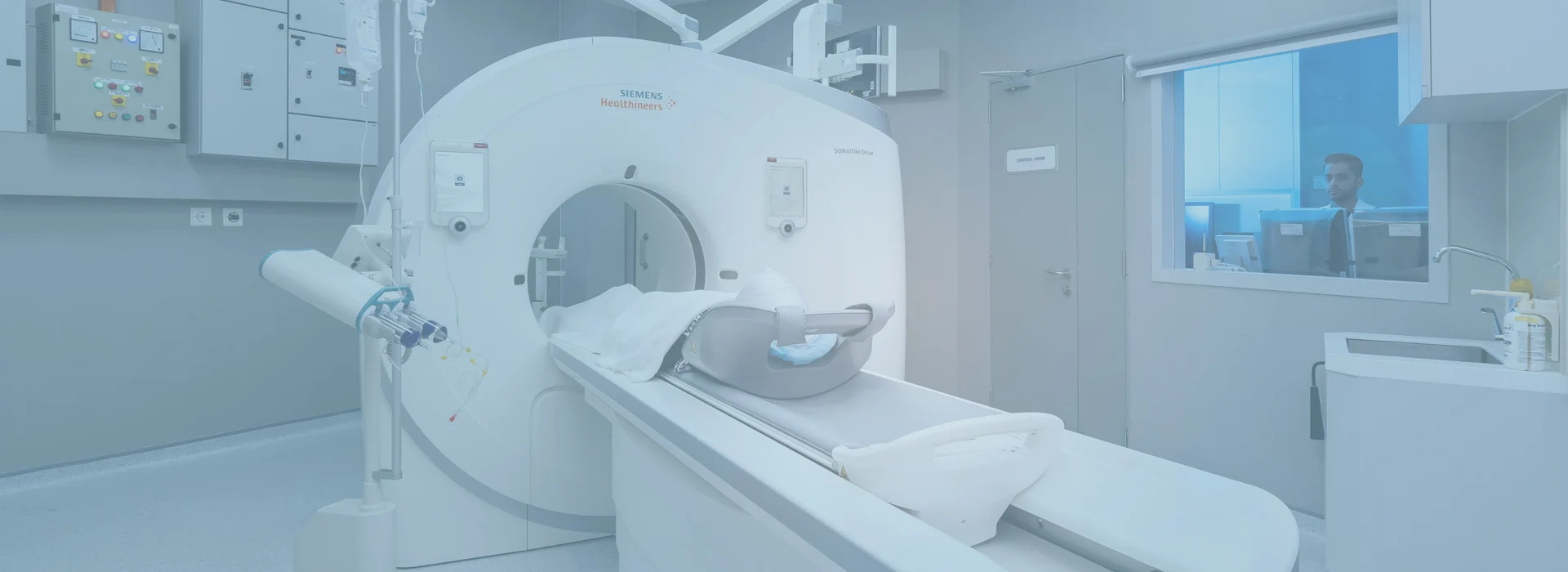
01 Oct Seizure or Epilepsy? How to Tell the Difference and Get the Right Care in Malaysia
Seizure or Epilepsy? How to Tell the Difference and Get the Right Care in Malaysia
By Island Hospital | October 01, 2025 10:34:09 AM
If we had a coin for every time someone said, “He had a seizure, so he must have epilepsy,” we’d probably have a small fortune by now. It’s a phrase we hear often here in Malaysia, but here’s the thing: it’s not always true. Not every seizure is a sign of epilepsy. But here’s the thing: that’s not always true. Not every seizure is a sign of epilepsy.
This is one of the most common misconceptions we come across. While epilepsy does involve seizures, not all seizures are caused by epilepsy. Some people experience a one-off seizure triggered by factors like high fever, low blood sugar, or lack of sleep and may never have another one again.
According to the World Health Organisation (WHO), epilepsy affects around 50 million people worldwide. In Malaysia, the lifetime prevalence of epilepsy is approximately 7.8 per 1,000 people (roughly 1 in 128), while about 4.2 per 1,000 (or 1 in 240) are currently living with active epilepsy.
That’s significant, but still far fewer than the number of people who have isolated or provoked seizures.
If those numbers surprise you, or if the level of public misunderstanding about epilepsy concerns you, don’t worry. You’re not alone, and you’re in the right place.
In this article, we’ll walk you through what sets seizures and epilepsy apart, how to get the right diagnosis, and what steps to take next, so you can move forward with clarity, confidence, and peace of mind.
What is a Seizure?
A seizure occurs when there’s a sudden, temporary burst of abnormal electrical activity in the brain. Think of it like a short circuit. When brain signals misfire, it disrupts normal communication between brain cells. This can lead to temporary changes in movement, behaviour, awareness, or sensations.
What does a seizure look like?
Seizures don’t always look like dramatic convulsions, shaking, or collapsing. In fact, they can range from subtle to severe, depending on the type. Some may cause full-body jerking, while others may be as simple as someone staring blankly for a few seconds.
Common signs of a seizure include:
- Jerking or twitching of the arms or legs
- Staring spells or unresponsiveness
- Sudden confusion or disorientation
- Tingling sensations, unusual smells, or tastes
- Loss of consciousness in more severe cases
- Brief episodes of strange behaviour or sensations
Types of seizures
Seizures are generally divided into two main categories:
1. Focal Seizures (Partial Seizures)
These begin in one specific area of the brain.
- Focal Aware Seizures (simple partial): The person remains conscious and aware but may have unusual sensations or muscle twitches.
- Focal Impaired Awareness Seizures (complex partial): The person may appear confused, unresponsive, or perform repetitive movements like lip-smacking.
2. Generalised Seizures
These affect both sides of the brain from the start.
- Absence Seizures (Petit Mal): Brief moments of staring or zoning out, common in children.
- Tonic-Clonic Seizures (Grand Mal): The most well-known type. This features muscle stiffening (tonic phase), followed by rhythmic jerking (clonic phase) and often loss of consciousness.
- Myoclonic Seizures: Sudden quick jerks or twitches, usually in the arms or legs.
- Atonic Seizures (Drop Attacks): Sudden loss of muscle strength, causing a person to fall.
- Tonic Seizures: Muscle stiffness without jerking.
- Clonic Seizures: Repeated, rhythmic muscle jerking, typically on both sides of the body.
Causes of seizure?
Not all seizures are caused by epilepsy. Many are provoked by temporary or treatable factors, such as:
- High fever (especially in children)
- Low blood sugar
- Sleep deprivation
- Physical or emotional stress
- Extreme fatigue
- Head trauma or brain infections, and injuries
- Alcohol or drug withdrawal
- Certain medications or electrolyte imbalances
One-time vs recurrent seizures
Having a seizure doesn’t automatically mean you have epilepsy. A one-time seizure, especially when linked to a trigger like fever or stress, may never happen again.
But when a person experiences two or more unprovoked seizures, it could point to epilepsy, a chronic neurological condition that requires long-term management.
What is Epilepsy?
Epilepsy is a chronic neurological condition that affects people of all ages. It is diagnosed when a person has two or more unprovoked seizures, meaning seizures that are not caused by temporary factors like fever, low blood sugar, or sleep deprivation.
Unlike a one-time or provoked seizure, epilepsy is ongoing and typically requires long-term management. It is one of the most common neurological conditions worldwide.
Childhood Epilepsy

1. Juvenile Myoclonic Epilepsy (JME)
Juvenile Myoclonic Epilepsy usually begins during adolescence and is marked by sudden, brief jerks or twitches of the muscles, most often in the arms and shoulders.
These episodes often occur in the morning shortly after waking up, and in some cases, a person may experience sudden knee buckling or drop objects without warning.
2. Absence Epilepsy
Absence epilepsy is marked by brief episodes of lost awareness, often lasting only a few seconds. During these episodes, the child may turn pale, stare blankly, be unresponsive to speech, or show subtle signs like twitching eyelids, rolling of the eyes, or slight head movements.
Some children can experience dozens, even up to 100, of these seizures in a single day.
3. Rolandic Epilepsy (Benign Epilepsy with Centrotemporal Spikes)
Often seen in children between the ages of 3 and 13, Rolandic epilepsy typically causes twitching on one side of the face and, in some cases, in an arm or leg. The child may also experience tingling, numbness, difficulty speaking or swallowing, and increased drooling.
These seizures usually happen while the child is falling asleep or waking up, and they remain conscious during the episode.
4. Infantile Spasms (West Syndrome)
Infantile spasms are a rare but severe form of epilepsy that typically begins in infancy. Seizures may involve sudden convulsive movements of the neck and torso, or bending and stretching of the body.
They often occur while the baby is falling asleep or shortly after waking. Each spasm lasts only a few seconds but can happen in clusters, sometimes hundreds of times a day. This condition requires urgent medical attention, as it can impact brain development if left untreated.
Symptoms of epilepsy?
The symptoms vary depending on the type and severity of seizures, and may include:
- Full-body convulsions (as in tonic-clonic seizures)
- Brief lapses in awareness or staring spells
- Muscle twitching or jerking (especially in the arms or legs)
- Strange sensations, such as a metallic taste, sudden fear or déjà vu
- Temporary confusion or disorientation
- Unresponsiveness for a few seconds
Causes of epilepsy?
Epilepsy often begins in childhood, and in many cases, children can outgrow certain types of epilepsy with proper care. However, it can also develop in adulthood or later in life, primarily due to head injuries or other health conditions.
Possible causes include:
- Genetic factors (family history)
- Brain injuries (e.g., accidents or trauma)
- Infections (like meningitis or encephalitis)
- Stroke or tumours
- Unknown causes — in some cases, no clear cause is found (idiopathic epilepsy)
Seizure vs Epilepsy: Key Differences
Although seizures and epilepsy are closely related, they are not the same thing. Understanding the differences can help you (or a loved one) feel informed, prepared, and in control of the next steps.
| Factor | Seizure | Epilepsy |
|---|---|---|
| Definition | A single episode of abnormal electrical activity in the brain. | A chronic neurological condition involving two or more unprovoked seizures. |
| Triggers | Often caused by temporary factors such as fever, low blood sugar, stress, lack of sleep, infections, or head injuries. | Usually not linked to immediate triggers; often due to underlying brain conditions, genetics, or unknown causes. |
| Recurrence | May be a one-time event and never happen again once the cause is addressed. | Recurrent seizures over time, without a temporary cause. |
| Diagnosis | Based on medical history, description of the event, and sometimes EEG or blood tests to find the cause. | Requires evidence of at least two unprovoked seizures and confirmed with tests such as EEG, MRI, and medical history review. |
| Treatment Needs | May not require long-term medication if the cause is identified and resolved. | Usually needs long-term management with anti-epileptic drugs (AEDs), lifestyle adjustments, or sometimes surgery. |
Want to expand your knowledge about brain tumours? This comprehensive article breaks down the signs, risks, and treatment options in simple terms, giving you the clarity you need to make informed decisions.
Getting the Right Diagnosis

A proper diagnosis is the first and most important step in treating seizures and epilepsy. Getting the diagnosis right is crucial—not just for effective treatment, but also for guiding lifestyle choices, reducing anxiety, and avoiding unnecessary medication or mismanagement.
Identifying whether a seizure is a one-time event or part of epilepsy determines the entire care plan. It can also reveal treatable causes and detect rare, high-risk conditions early.
Common diagnostic tests
Neurologists use a combination of tests and assessments to get an accurate picture:
- Medical History and Physical Exam: A detailed discussion about the seizure event, medical background, and possible triggers. Eyewitness accounts or videos are extremely valuable.
- Neurological Examination: Tests of reflexes, muscle strength, coordination, and mental skills like memory and problem-solving.
- Electroencephalogram (EEG): Measures brain electrical activity to detect patterns linked to seizures.
- Magnetic Resonance Imaging (MRI): Produces detailed brain images to identify structural changes such as scarring, tumours, or malformations.
- Blood tests: Checks for potential triggers like infections, low blood sugar, or electrolyte imbalances.
- Additional imaging (CT scan): Often used in emergencies to quickly rule out bleeding or injury.
What Happens During a Neurology Consultation?
While a general practitioner can perform an initial assessment, seizures and epilepsy require the expertise of a neurologist. A specialist can pinpoint the cause, classify the seizure type, and determine the most effective treatment.
During your consultation, you can expect:
- Detailed Discussion
Review of your medical history and a full account of the seizure event, including witness reports or video recordings. - Nervous System Examination
Tests for coordination, reflexes, sensory responses, and cognitive functions (e.g., naming objects, simple calculations). - Planning Diagnostic Tests
Selection of appropriate tests such as EEG, MRI, CT scans, blood work, and in some cases, a lumbar puncture or other specialised evaluations. - Next Steps
The neurologist will explain results, discuss treatment options (medications, diet, surgery, neurostimulation), and arrange follow-up care.
Curious whether a stroke can lead to dementia? This detailed article walks you through the brain-body connection, covering how strokes may impact memory, what warning signs to watch for, and how early intervention can make all the difference.
Treatment Options in Malaysia
The right treatment depends on whether the person experienced a one-time seizure or has been diagnosed with epilepsy. In all cases, the goal is to address the cause, prevent recurrence, and improve quality of life.
Seizure (one-time or provoked)
Many seizures happen due to a temporary trigger, like an infection, high fever, low blood sugar, or head injury. In these cases, treatment focuses on fixing the root cause rather than starting long-term medication.
Typical steps include:
- Observation: Monitoring recovery and watching for recurrence.
- Treating the underlying cause: For example, antibiotics for infection, electrolyte replacement, or blood sugar management.
- Follow-up testing: A repeat EEG or imaging scan may be recommended if there’s concern about recurrence.
- No long-term medication unless the patient is considered high-risk for future seizures.
Epilepsy (chronic condition)
Epilepsy requires ongoing management to control seizures and reduce their impact on daily life.
Common treatment approaches include:
- Anti-epileptic drugs (AEDs): Stabilise the brain’s electrical activity. Common AEDs in Malaysia include sodium valproate, lamotrigine, and carbamazepine.
- Advanced therapies:
- Vagus Nerve Stimulation (VNS): A device implanted under the skin that sends mild electrical pulses to the brain via the vagus nerve.
-
- Ketogenic diet: A medically supervised high-fat, low-carbohydrate diet that can help reduce seizures, particularly in children with drug-resistant epilepsy.
- Surgical options: For drug-resistant epilepsy, procedures such as resection (removing the seizure-causing brain area) or minimally invasive laser ablation may be considered.
| Aspect | Seizure | Epilepsy |
|---|---|---|
| Main Goal | Treat the underlying cause and prevent recurrence | Control seizures long-term and improve quality of life |
| Medication | Not usually needed unless high risk of recurrence | Anti-epileptic drugs (AEDs) taken daily |
| Other Therapies | Rest, recovery, and follow-up testing (EEG, MRI) | May include Vagus Nerve Stimulation (VNS), ketogenic diet |
| Surgery | Not required | Possible for drug-resistant cases (e.g., resection, laser ablation) |
| Follow-up | Short-term monitoring | Ongoing specialist care and medication reviews |
Thinking about surgery for epilepsy?
Speak to our neurology and neurosurgery care team at Island Hospital for expert guidance through every step of your recovery, both medical and emotional.
Lifestyle and Self-Management
Medical treatment is only one part of living well with seizures or epilepsy. Day-to-day habits, safety precautions, and emotional support can make a big difference in preventing seizures and improving quality of life.
Adopting healthy habits not only supports physical well-being but also helps you feel more in control of your condition.
1. Adequate Sleep

Getting enough rest isn’t just about feeling refreshed: it’s a vital part of seizure prevention.
- Maintain a consistent sleep schedule: Go to bed and wake up at the same time every day.
- Aim for quality sleep: Most adults need 7 – 9 hours each night.
- Avoid sleep disruptors: Limit caffeine in the afternoon, and reduce screen time before bed.
Sleep deprivation can disrupt the brain’s electrical activity, making seizures more likely.
2. Stress Management

Stress can be a trigger for many people with epilepsy. When you’re under stress, your body releases hormones that may affect brain activity.
- Try deep breathing, meditation, yoga, or gentle walks.
- Incorporate relaxation into your daily routine, just as you do with medication.
- Mindfulness, journaling, or hobbies you enjoy can help keep stress levels low.
3. Identify and Avoid Triggers
Every person’s triggers can be different, but common ones include:
- Alcohol or recreational drugs
- Skipping meals
- Flashing or flickering lights (photosensitive epilepsy)
- Certain medications
Keep a seizure diary to record when seizures occur, what you were doing beforehand, and any possible triggers. This helps you and your neurologist spot patterns.
4. Medication Adherence
Did you know that about 70% of people with epilepsy can control their seizures with medication alone? Missing even a single dose of anti-epileptic drugs (AEDs) can lead to breakthrough seizures, even after long periods without symptoms.
- Use phone alarms, pill organisers, or link medication times to daily habits (e.g., brushing your teeth).
- Never stop medication suddenly. Speak to your neurologist if you have concerns or side effects.
5. Stay Active and Eat Well

Regular exercise can boost mood, increase energy levels, and support overall health, making it an essential part of managing seizures or epilepsy. It’s best to consult your doctor about which activities are safe and suitable for your condition.
Alongside physical activity, maintaining a balanced diet is essential for supporting both brain and body health. In some cases, specialised diets such as the ketogenic or modified Atkins diet may be recommended under medical supervision to help reduce seizure frequency, particularly for those with drug-resistant epilepsy.
6. Safety Measures
Living with seizures means planning ahead to reduce the risk of injury:
- Driving: In Malaysia, you must be seizure-free for a set period before driving. Always follow your doctor’s guidance and local regulations.
- At home: Shower instead of bathing, use non-slip mats, and keep sharp or heavy objects away from areas where you might fall.
- At work: If your job involves heights, water, or heavy machinery, discuss possible adjustments with your employer.
7. Counselling, Education, and Support Groups
The emotional impact of epilepsy is often overlooked.
- Counselling can help with anxiety, depression, or feelings of isolation.
- Education empowers you and your family to respond calmly and effectively to seizures.
- Support groups, both in-person and online, connect you with people who understand and can share coping strategies.
When to See a Doctor Immediately
Knowing when to seek urgent medical help can make a world of difference. While many seizures resolve on their own, certain red flag signs require immediate attention, not just for your health, but potentially to save a life.
Red Flag Symptoms
Call emergency services or make your way to the nearest hospital if you or someone you know experiences any of the following:
- Seizure lasting longer than five minutes
Most seizures last between 30 seconds and two minutes. Anything beyond five minutes is considered a medical emergency called status epilepticus, which can lead to permanent brain damage or death if not treated promptly.
- Repeated seizures without regaining consciousness
If a second seizure occurs immediately after the first, or if the person remains unconscious between episodes, urgent medical intervention is needed.
- Injury during a seizure
Seizures can cause falls or accidents, leading to injuries such as head trauma or broken bones. Medical evaluation ensures these injuries are properly treated.
- First-time seizure in an adult.
Even if the seizure stops quickly, a new-onset seizure in adulthood should be investigated to rule out serious underlying causes.
- No return of consciousness or breathing
If the person does not resume normal breathing or awareness within minutes, call for emergency help immediately.
- High-risk health conditions
Seek urgent care if the person has a high fever, is pregnant, has diabetes, or shows signs of heat exhaustion.
Emergency Care in Malaysia
If any of these red flags occur, call 999 or 112 for ambulance assistance. In Penang, Island Hospital’s Emergency Department is open 24/7 and equipped to provide comprehensive neurology and neurosurgery emergency care, ensuring prompt assessment and intervention for seizure emergencies.
Who Should I Consult?
If you or someone you know is experiencing seizures, unexplained episodes of unconsciousness, or has been diagnosed with epilepsy, it’s essential to see a neurologist.
At Island Hospital, our team of highly experienced neurologists provides comprehensive care tailored to each patient’s needs. Whether you need a first-time evaluation, a second opinion, or long-term epilepsy care, our neurology team is committed to delivering world-class treatment with compassion and precision.
Check out our list of Island Hospital neurology specialists and book your consultation today to take the first step towards better brain health.

Don’t Let Seizures Control Your Life, Get Expert Help!
Living with seizures or epilepsy can be overwhelming, but with the right care, it is possible to manage symptoms, reduce risks, and live a whole, active life. From identifying triggers and making lifestyle changes to accessing advanced medical and surgical treatments, the key is getting an accurate diagnosis and a personalised treatment plan.
At Island Hospital, our experienced neurology team specialises in diagnosing and treating all forms of seizures and epilepsy. With cutting-edge diagnostic technology, a full range of treatment options, and a commitment to compassionate, patient-centred care, we’re here to guide you at every step.
Let us help you take control of your condition and regain peace of mind. Book your consultation with our neurology specialists today!
FAQs
1. Can epilepsy be cured?
While there’s no guaranteed cure for all types of epilepsy, some people outgrow the condition or go into long-term remission with treatment. For others, epilepsy can be well-managed with anti-epileptic medication, lifestyle changes, or surgical options, allowing many patients to live seizure-free for years.
While there’s no guaranteed “cure” for all types, many patients can live seizure-free for years.
2. How much does epilepsy diagnosis and treatment cost in Malaysia?
Consultations with a neurologist in Malaysia typically range from RM150 to RM500, depending on the location and type of facility. Additional costs for tests such as EEG, MRI, or blood work can vary widely, and ongoing treatment expenses depend on the medication or therapy prescribed.
Your doctor can provide a more accurate estimate based on your individual needs.
3. Do seizures cause brain damage?
Most short seizures do not cause brain damage. However, prolonged seizures (lasting longer than five minutes) or repeated seizures without recovery in between can be dangerous and may lead to brain injury. These situations require immediate emergency care.
4. Can epilepsy affect memory or mood?
Yes. Some people with epilepsy experience memory lapses or mood changes, which may be due to the condition itself or side effects from medication.
5. Can women with epilepsy have a healthy pregnancy?
Yes—most women with epilepsy can have safe, healthy pregnancies with careful planning and medication management under a doctor’s guidance






